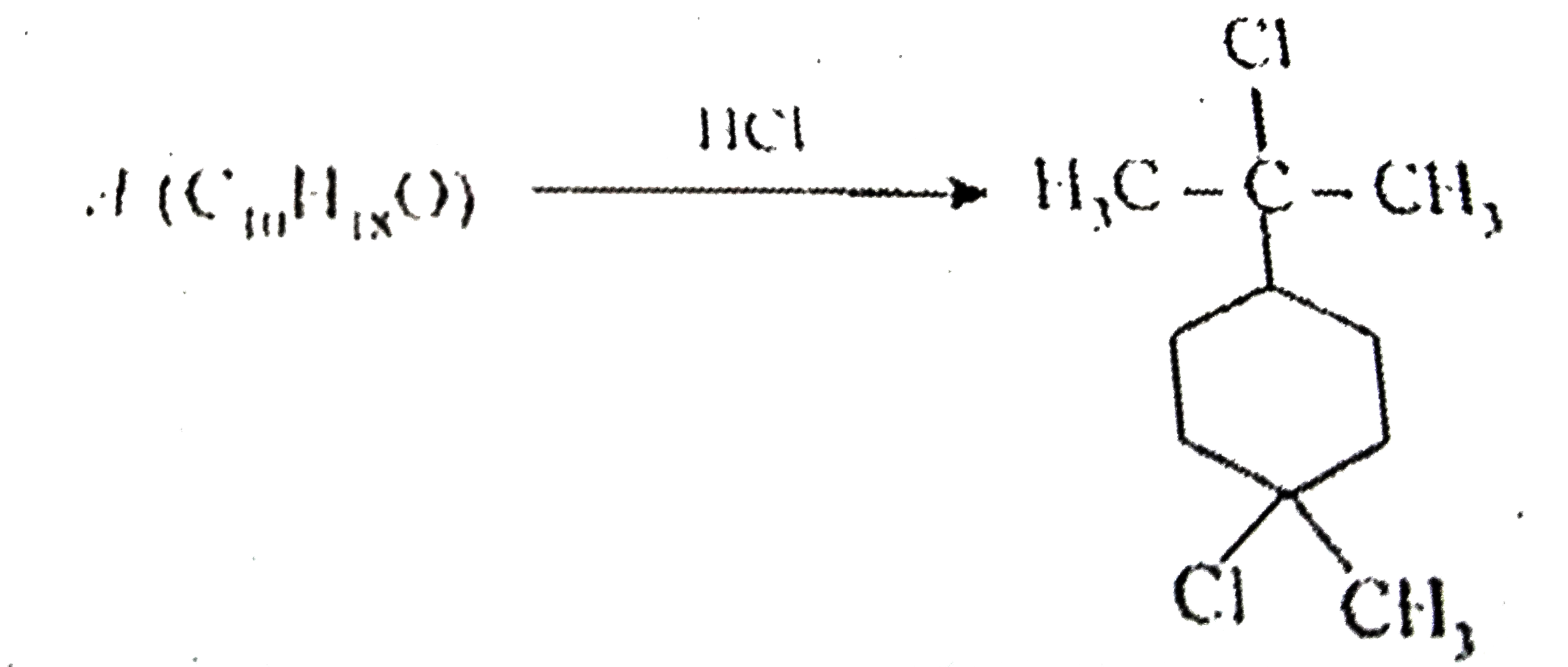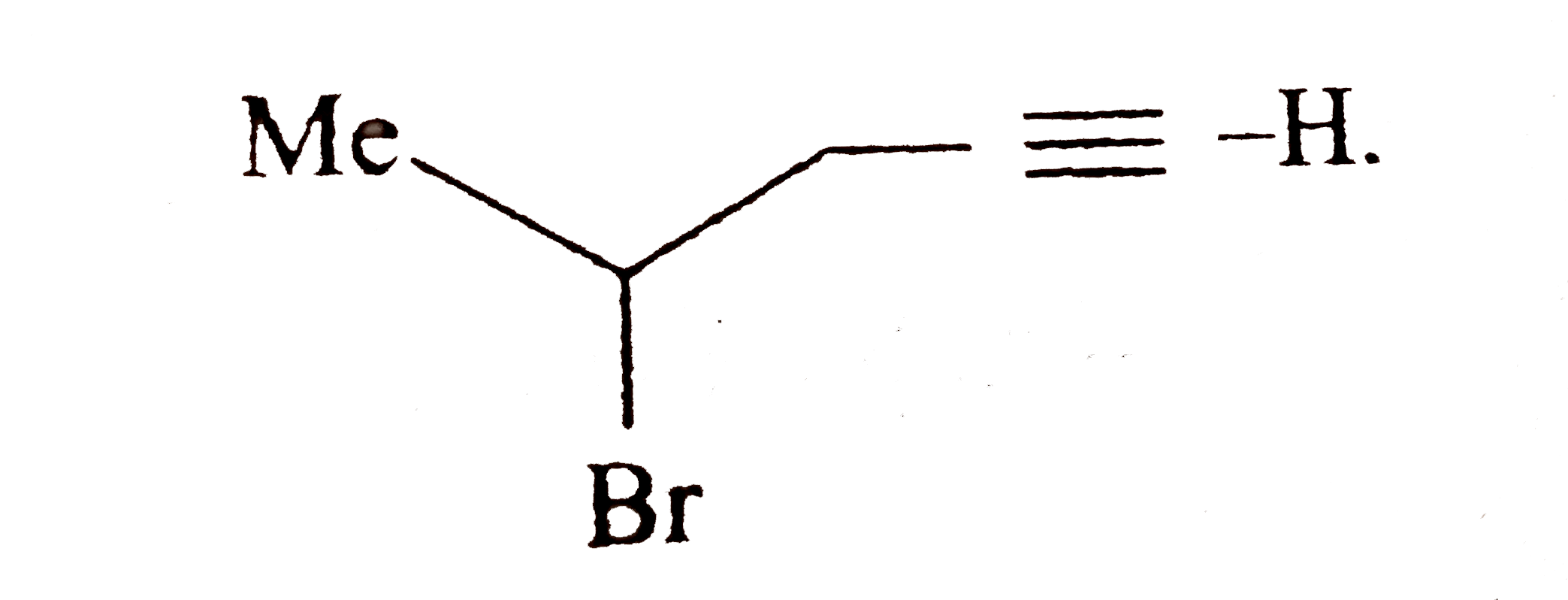Why is benzene extra ordinarily stable though it contains three double bonds?
The correct Answer is:Due to resonance
To understand why benzene is extraordinarily stable despite containing three double bonds, we can break down the explanation into several key points:
Step 1: Structure of Benzene
Benzene is represented as a hexagonal ring consisting of six carbon atoms (C6) and six hydrogen atoms (H6). It has alternating single and double bonds, which can be depicted as:
CHC∣∣CC C
Step 2: Aromatic Nature
Benzene is classified as an aromatic compound. For a compound to be aromatic, it must satisfy Huckel's rule, which states that a compound must have a certain number of π (pi) electrons. Specifically, it must have \(4n + 2\) π electrons, where \(n\) is a non-negative integer.
Step 3: Application of Huckel's Rule
In benzene, there are a total of 6 π electrons (one from each carbon-carbon double bond). By setting \(n = 1\) in Huckel's rule:
\(
4n + 2 = 4(1) + 2 = 6
\)
This confirms that benzene follows Huckel's rule, thus qualifying it as aromatic.
Step 4: Planarity of Benzene
Benzene is a planar molecule. This planarity allows for effective overlap of p-orbitals, which is essential for the delocalization of π electrons across the ring.
Step 5: Delocalization of Electrons
The extraordinary stability of benzene arises from the delocalization of its π electrons. Instead of being localized between specific carbon atoms, the electrons are spread out over the entire ring. This delocalization can be illustrated by resonance structures:
- One resonance structure shows the double bonds in one arrangement.
- Another resonance structure shows the double bonds shifted to different positions.
This continuous shifting of electrons contributes to the overall stability of the molecule.
Conclusion
The extraordinary stability of benzene, despite having three double bonds, is due to its aromatic nature, which is a result of satisfying Huckel's rule, being planar, and having delocalized π electrons throughout the ring. This delocalization minimizes the energy of the molecule, making it more stable than expected.
---
Benzene is represented as a hexagonal ring consisting of six carbon atoms (C6) and six hydrogen atoms (H6). It has alternating single and double bonds, which can be depicted as:
Benzene is classified as an aromatic compound. For a compound to be aromatic, it must satisfy Huckel's rule, which states that a compound must have a certain number of π (pi) electrons. Specifically, it must have \(4n + 2\) π electrons, where \(n\) is a non-negative integer.
In benzene, there are a total of 6 π electrons (one from each carbon-carbon double bond). By setting \(n = 1\) in Huckel's rule:
4n + 2 = 4(1) + 2 = 6
\)
Benzene is a planar molecule. This planarity allows for effective overlap of p-orbitals, which is essential for the delocalization of π electrons across the ring.
The extraordinary stability of benzene arises from the delocalization of its π electrons. Instead of being localized between specific carbon atoms, the electrons are spread out over the entire ring. This delocalization can be illustrated by resonance structures:
- Another resonance structure shows the double bonds shifted to different positions.
The extraordinary stability of benzene, despite having three double bonds, is due to its aromatic nature, which is a result of satisfying Huckel's rule, being planar, and having delocalized π electrons throughout the ring. This delocalization minimizes the energy of the molecule, making it more stable than expected.
Topper's Solved these Questions
Similar Questions
A gas which contains double bond is :
View SolutionGas containing double bond.
View SolutionIn the following questions, a statement of assertion (A) is following by a statement of reason (R )
A : The number of optically active isomers of tartaric acid is three though it contains two asymmetric carbons.
R: One of the optical isomers has a centre of symmetry..
View SolutionDegree of unsaturation of A = 2, it contains no double or triple bonds.

View SolutionGive reasons for the following:
(i) tert-buty lbenzene does not give benzonic acid on treatment with acidic KMnO4.
(ii)Normally, benzene gives electrophilic substitution reaction rather than electrophilic addition reaction although it has double bond.
View SolutionGive an example of the following:
A carbon compound containing two double bonds.
View SolutionThe C−C bond length is 1.54ÅC=C bond length is 1.33Å What is the circumference of benzene ring ? Bond length between single and double bonds =1.4Å .
View SolutionExplain the following observation :
a. When pent −1 en −4− yneistrested with HBr in molar proportion, the addition takes place on the double bond and not on the triple bond, thereby, yielding the porduct ,

b. The (C=−C) bond length in propene is shorter than expected.
c. Whey benzyl carbocation is more stable than ethyl carbocation ?
d. Why does but −2− ene exhibit cis − trans isomerism but but −2− yne does not ?
e. CI2C=CCI2 does not add CI2 under usual conditions but adds in the presence of AICI3.
View SolutionFill in the blanks with the correct word from the brackets:
The covalent molecule containing three single covalent bonds is ____________________ [water / methane / ammonia].
View SolutionWhich of the following reactions of benzene does not account for the three C=C bonds in the molecule-
(a) Benzene+Br2FeBr3−−−−−−−→conc.H2SO4bromobenzene+HBr
(b) Benzene +HNO3→nitrobenzen.e+H2O
(c) Benzene+3O3→ Triozonide
(d) Benzene +3H2Ni−−→cyclohexane
View Solution
